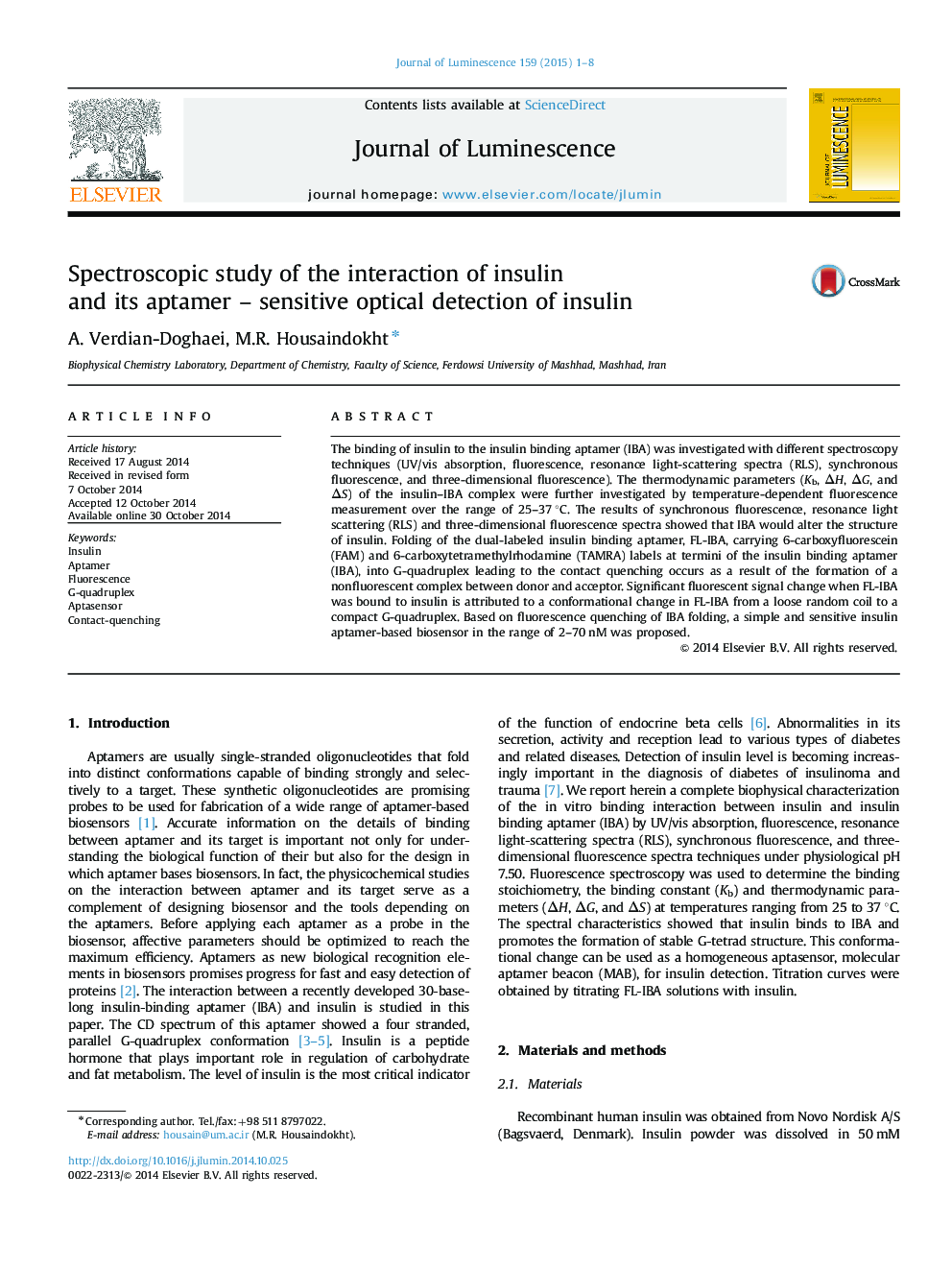| Article ID | Journal | Published Year | Pages | File Type |
|---|---|---|---|---|
| 5399600 | Journal of Luminescence | 2015 | 8 Pages |
Abstract
The binding of insulin to the insulin binding aptamer (IBA) was investigated with different spectroscopy techniques (UV/vis absorption, fluorescence, resonance light-scattering spectra (RLS), synchronous fluorescence, and three-dimensional fluorescence). The thermodynamic parameters (Kb, ÎH, ÎG, and ÎS) of the insulin-IBA complex were further investigated by temperature-dependent fluorescence measurement over the range of 25-37 °C. The results of synchronous fluorescence, resonance light scattering (RLS) and three-dimensional fluorescence spectra showed that IBA would alter the structure of insulin. Folding of the dual-labeled insulin binding aptamer, FL-IBA, carrying 6-carboxyfluorescein (FAM) and 6-carboxytetramethylrhodamine (TAMRA) labels at termini of the insulin binding aptamer (IBA), into G-quadruplex leading to the contact quenching occurs as a result of the formation of a nonfluorescent complex between donor and acceptor. Significant fluorescent signal change when FL-IBA was bound to insulin is attributed to a conformational change in FL-IBA from a loose random coil to a compact G-quadruplex. Based on fluorescence quenching of IBA folding, a simple and sensitive insulin aptamer-based biosensor in the range of 2-70 nM was proposed.
Related Topics
Physical Sciences and Engineering
Chemistry
Physical and Theoretical Chemistry
Authors
A. Verdian-Doghaei, M.R. Housaindokht,
